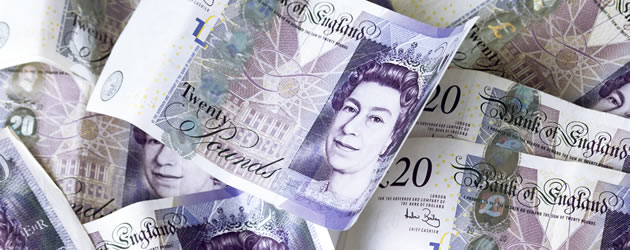- Three major UK property funds freeze after investor panic – Pound plunged as confidence in domestic economy weakened further
- German factory orders disappointed forecast – Euro weighed down by softer Eurozone outlook
- UK data expected to remain discouraging – GBP exchange rates to maintain downside bias
- GBP USD exchange rate could regain ground on dovish Fed minutes – Lower odds of 2016 rate hike may undermine appeal of the US Dollar
With little reason for confidence in the UK economy the GBP USD exchange rate slipped to a fresh low overnight, while the Euro struggled to capitalise on the heightened atmosphere of risk aversion.
The dramatic drop to 1.27 means the Pound is trading at its lowest levels against the US Dollar since the 1980s and a turnaround in the pairing’s fortunes isn’t expected to occur anytime soon.
Pound (GBP) Under Pressure after Property Fund Suspensions Spook Markets
Turmoil continued to rock the Pound (GBP) on Tuesday, with markets somewhat panicked by the decision of three major property funds to suspend redemptions. While this was an attempt to protect investors in the long term, maintaining the overall integrity of the funds in question, the move did not help the growing sense of Brexit-based anxiety. Demand for Sterling was also impacted by a disappointing UK Services PMI, which slid to 52.3 to hit a thirty-eight month low and signalled renewed weakness within the sector. This disappointing result did not seem to bode well for the outlook of the domestic economy, exacerbating fears that the UK could see a severe slowdown in the wake of the Brexit vote.
The mood towards Sterling recovered modestly on Wednesday morning, in spite of the fact that the Pound to US Dollar (GBP USD) exchange rate temporarily fell to a fresh thirty-one-year low of 1.2835. Confidence is unlikely to pick up substantially in the near future, even though the Conservative leadership contest is proceeding apace with the elimination of two of the five candidates. Should tomorrow’s Industrial and Manufacturing Production figures point towards additional slowing in the domestic economy then the Pound is expected to cede further ground to its rivals.
Weak German Data Muted EUR GBP Exchange Rate Gains
Worries over the future of the Italian banking sector have been exerting downside pressure on the single currency (EUR) this week, as the fallout of a Brexit is feared to be capable of prompting a fresh crisis for the sector. As Prime Minister Matteo Renzi is thought to be willing to break EU regulations in order to prop the banks up in the event of bad loans triggering a collapse, this has naturally heightened concerns over the future of the Union. Uncertainty over the possibility of political and economic contagion have equally weighed on the appeal of the Euro, limiting the benefit it has received from the general increase in safe-haven demand.
Disappointing German Factory Orders figures saw the common currency weaken on Wednesday, with both the monthly and annual measures failing to recover as far as forecast. This suggests that the Eurozone’s powerhouse economy was on a bearish footing even before the UK voted to leave the EU; a sign that has not encouraged investors. As Carsten Brzeski, Chief Economist at ING, noted:
‘Since the start of 2015, new orders have been decreasing by an average of 0.1% MoM. While foreign orders have dropped by a monthly average of 0.2%, domestic orders increased by 0.1%. Even if monthly new orders data is often filed away as being too choppy to matter, the trend is obvious: the German industry is treading water.’
US Dollar (USD) on Strong Form ahead of Fed Meeting Minutes
Despite the latest raft of US data proving generally weak on Tuesday the US Dollar (USD) maintained a bullish trend. With markets facing an atmosphere of persistent uncertainty the appeal of the safe-haven asset has remained high. While Factory and Durable Goods Orders figures both slowed more sharply than anticipated in May this failed to particularly dent sentiment, even though signs continue to point towards a slowing of growth in the world’s largest economy.
Investors could take greater heart from this afternoon’s ISM Non-Manufacturing Composite Index, which is predicted to have strengthened from 52.9 to 53.3 in June. Continued robustness in the service sector would shore up the ‘Greenback’ further, particularly in the current mood of risk aversion. However, if the latest meeting minutes from the Federal Open Market Committee (FOMC) prove more dovish in tone then the US Dollar could struggle to maintain its gains. If the odds of a 2016 Fed interest rate hike deteriorate further then the GBP USD exchange rate may stage a stronger recovery.
Current GBP, EUR, USD Exchange Rates
At the time of writing, the Pound to Euro (GBP EUR) exchange rate was on a downtrend at 1.1704, while the Pound to US Dollar (GBP USD) was trending narrowly around 1.2959.



